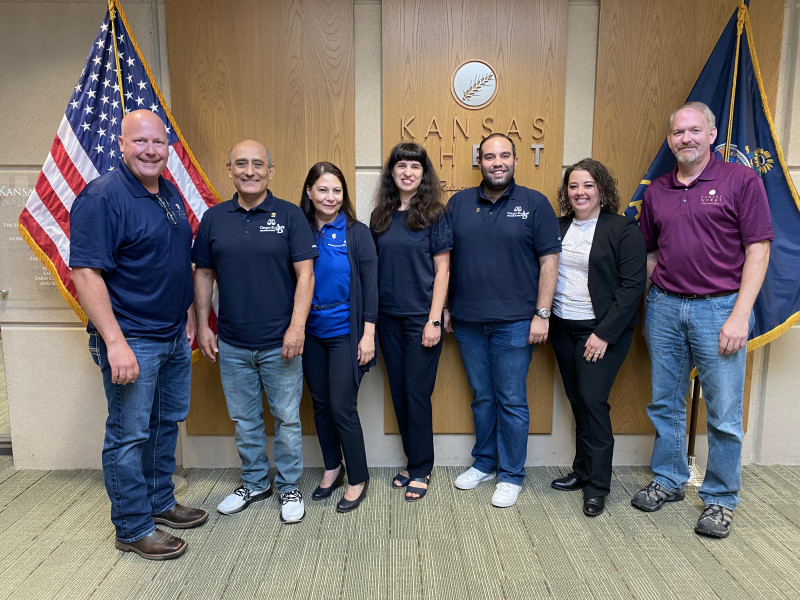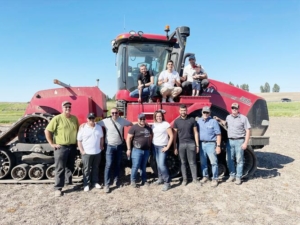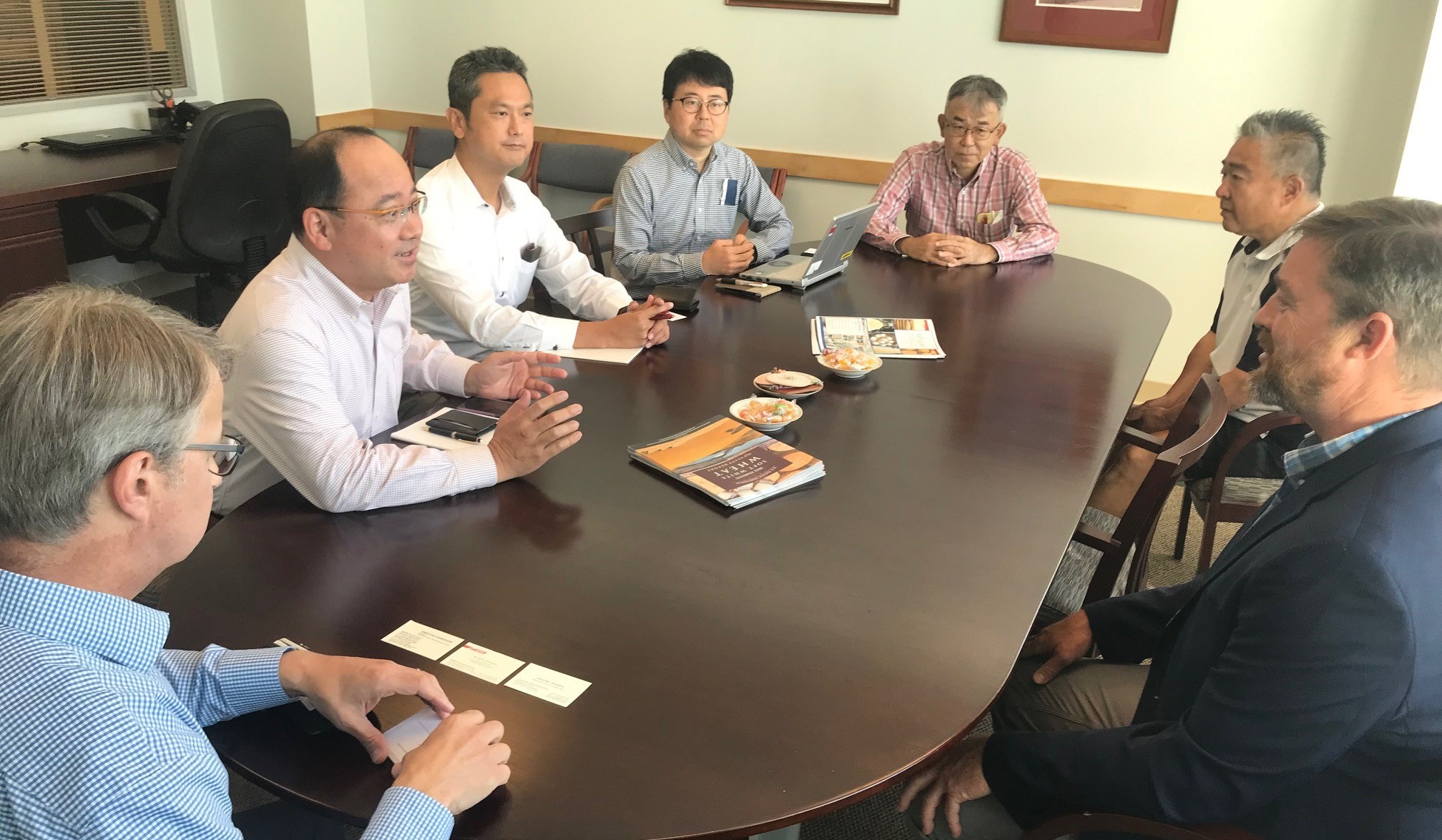U.S. Wheat Customer Trade Teams are Back
U.S. Wheat Associates (USW) invests funding from USDA Foreign Agricultural Service export market development programs to bring several trade teams of overseas customers and stakeholders to the United States. Visiting wheat-producing states connects customers with farmers as well as state wheat commissions and industry partners that co-sponsor local visits. The goal is the same for USW and partners: to promote the reliability, quality and value of all six U.S. wheat classes to customers around the world.
Substituting virtual trade visits during the pandemic did allow more customers to learn about the 2020 and 2021 U.S. wheat conditions and harvest. And virtual experiences will remain part of USW’s trade service and technical support.
However, “we are excited to be able to bring customers to the U.S. again to meet face-to-face with U.S. wheat farmers and to learn about the U.S. marketing system,” said Stephanie Bryant-Erdmann, U.S. Wheat Associates (USW) assistant regional director for Mexico, Central America, the Caribbean and Venezuela, who led a team of Mexican flour milling executives to Kansas and Ohio in June. “The face-to-face conversations and hands-on experiences an in-person trade team offers are invaluable.”

Mexican Millers. A trade team of flour millers from Mexico, the largest importer of U.S. wheat in the world, learned about the U.S. hard red winter wheat industry in June through visits with the Kansas Wheat Commission (above), the IGP Institute and the Kansas Wheat Innovation Center in Manhattan, Kan.
Club Wheat Exchange
In mid-July, USW brought a team of three quality control managers from Japanese flour millers to Portland, Ore., to exchange information with the Wheat Marketing Center and Pacific Northwest wheat commissions about U.S. club wheat functional performance (photo above). The demand for the highest quality cakes and confection products leads Japan to be the leading importer of U.S. Western White wheat. This is a subclass of soft white (SW) that includes a blend of not less than 10% club wheat and 90% SW, which allows the customer to define quality targets and adjust the proportion of SW and Club wheat in the blend according to price and quality expectations.
Up-to-Date Trade Information
The grain companies with elevators in the Pacific Northwest process an estimated 60% of all U.S. wheat exports. That is why the Pacific Grain Exporters Association often participates in USW-sponsored trade team activities. Association members met with a trade team of Korean flour milling executives July 22, a day that included stops at USW’s West Coast Office and the Wheat Marketing Center in Portland and the EGT Grain Terminal in Longview, Wash. The millers also spent a full day on wheat farms hosted by growers David Brewer and Jeff Newtson with support from the Oregon Wheat Commission.
Next Generation Millers
Also in July, members of the next generation of flour millers and commodity buyers from operations in Morocco, Algeria, Egypt and Oman spent 12 days on an educational tour to Idaho, Kansas and North Dakota.
The team included future industry decision-makers. Some attendees were students and had part-time jobs in their family’s flour mills to prepare them to take over from their parents. USW used this opportunity to introduce information about the U.S. grain marketing system at an early stage in the careers of these young professionals and build strong relationships to lay the foundation for future opportunities like potential combination cargos.
“These young generation millers represent their family businesses and are exposed to the U.S. grain marketing system at a very early age,” said Tarik Gahi, milling and baking technologist in the USW office in Casablanca, Morocco, who accompanied the team. “Visits to different states on this trip were an opportunity to introduce different classes of U.S. wheat and learn about efforts implemented by organizations and facilities to produce the best quality wheat.”

Touching Ground. Visiting farms as part of USW-sponsored trade team activities is a memorable experience for U.S. wheat customers and important for U.S. wheat industry stakeholders. This team of next generation flour millers from North Africa and the Middle East touched ground at Idaho Wheat Commissioner Bill Flory’s farm in July.
South American Visits
Senior managers and wheat buyers from five Colombian flour mills and the leader of Fedemol, the Colombian milling and wheat food industries association, just returned home July 30 from a nine-day trade team activity in Washington state, Ohio and Kansas. Colombian millers purchase more U.S. hard red winter, soft red winter and soft white wheat each year than any other South American country. Colombia has ports on the Gulf of Mexico receiving U.S. hard red winter and soft red winter wheat, and on the Pacific Ocean receiving U.S. SW wheat.
In addition, technical managers from flour mills in Peru and Ecuador arrived in July 31 for a USW-sponsored trade team to meet with industry representatives from Minnesota, Idaho and Oklahoma. They will be in the United States through Aug. 6.
Over the next two months, additional trade teams from Japan, the Philippines, Taiwan and South Asian countries will have that personal experience meeting with the dependable people who make up the U.S. wheat industry.
USW wants to thank our partners with USDA-FAS, state wheat commissions, educational organizations and of course the farmers we represent who make these activities possible.


